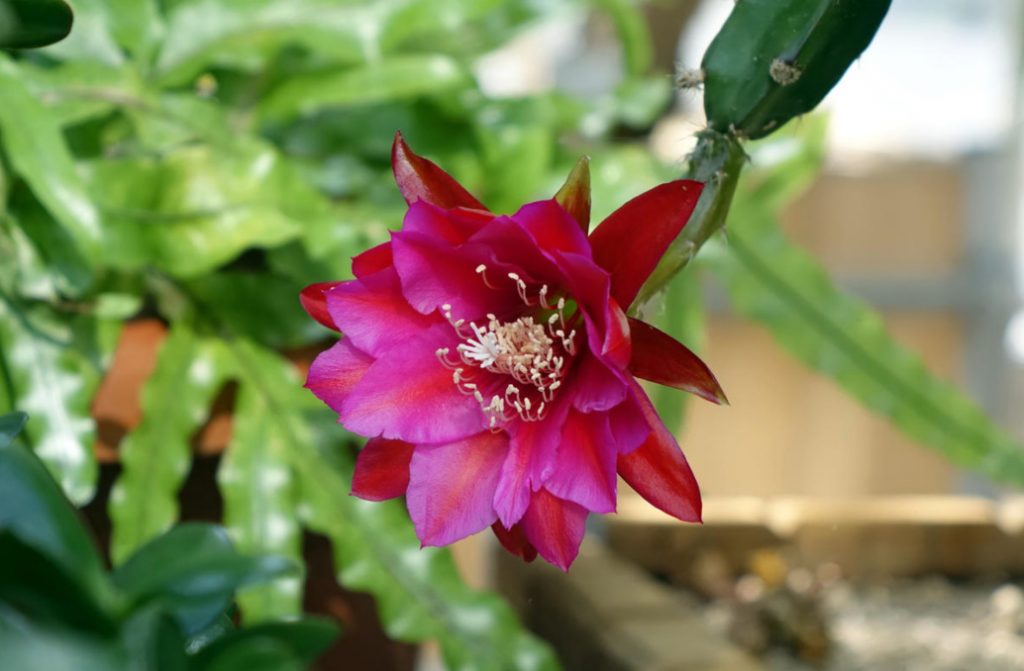Prickly orchid, indoor lily, phyllocactus – as soon as the people do not call the well-known cactus with a long branched stem-epiphyllum. They appreciate it for its ease of care and the beauty of flowering. Find out what conditions you need to create on the windowsill to make your leaf-shaped cactus bloom.
Where to place and how to care for
Place the plant on the eastern and western window sills. The lighting should be bright, but diffused. In summer, the epiphyllum feels good in the fresh air. The comfortable temperature for it in the warm season is +20…+25°C, and from November to February, when the plant is resting, the temperature should be maintained at +10…+15°C.
Watering and fertilizing
Water the leaf-shaped cactus regularly, without waterlogging, and in winter this is done quite rarely. In the spring and summer period, the epiphyllum is fed twice a month, adding fertilizers for cacti to the soil, prepared according to the instructions.
Why do they cut off the epiphyllum
It is also supposed to periodically prune the stems of the plant. At the same time, cut or round in cross-section stems that do not give flowers are removed, and flat stems are shortened. It should be remembered that the flowers are formed only on the flat stems of the previous year, so the adult stems are rejected no earlier than 2-3 years later. The sections are best treated with crushed coal.

Why the leafy cactus doesn’t bloom
There are cases when, despite all expectations, the epiphyllum does not bloom. There are quite a few reasons:
- insufficient lighting,
- too much watering in the winter,
- wintering in warm conditions,
- excess nitrogen in the ground.
Timely transplanting of young plants is also very important for flowering. But a mature cactus is transplanted only if necessary, when the roots appear from the drain hole.
For drainage, a layer of expanded clay or pebbles is used. The soil for plants can be bought in the store or prepared yourself: mix four parts of turf and leaf soil, adding one part of charcoal and peat. Components containing lime should not be added to the substrate.

Pests and diseases
Most often, the epiphyllum is attacked by aphids, scabies, spider mites, mealybugs. They fight these sucking insects by wiping the plant stems with an alcohol or soap solution, as well as treating them with insecticides.
Sometimes the epiphyllum is affected by black rot, fusarium, rust, or anthracnose. In this case, the plant is treated with fungicides. If the rot has affected the roots, the cactus should be transplanted into a new soil, cutting out the rotten areas of the roots and sprinkling the sections with crushed coal. Next, you need to monitor the watering.
How to propagate epiphyllum
This cactus can be propagated vegetatively, from seeds, by dividing the bush. The best way is still cuttings. At the same time, the planting of cuttings is carried out in the spring, but it is better to harvest them in the fall.






